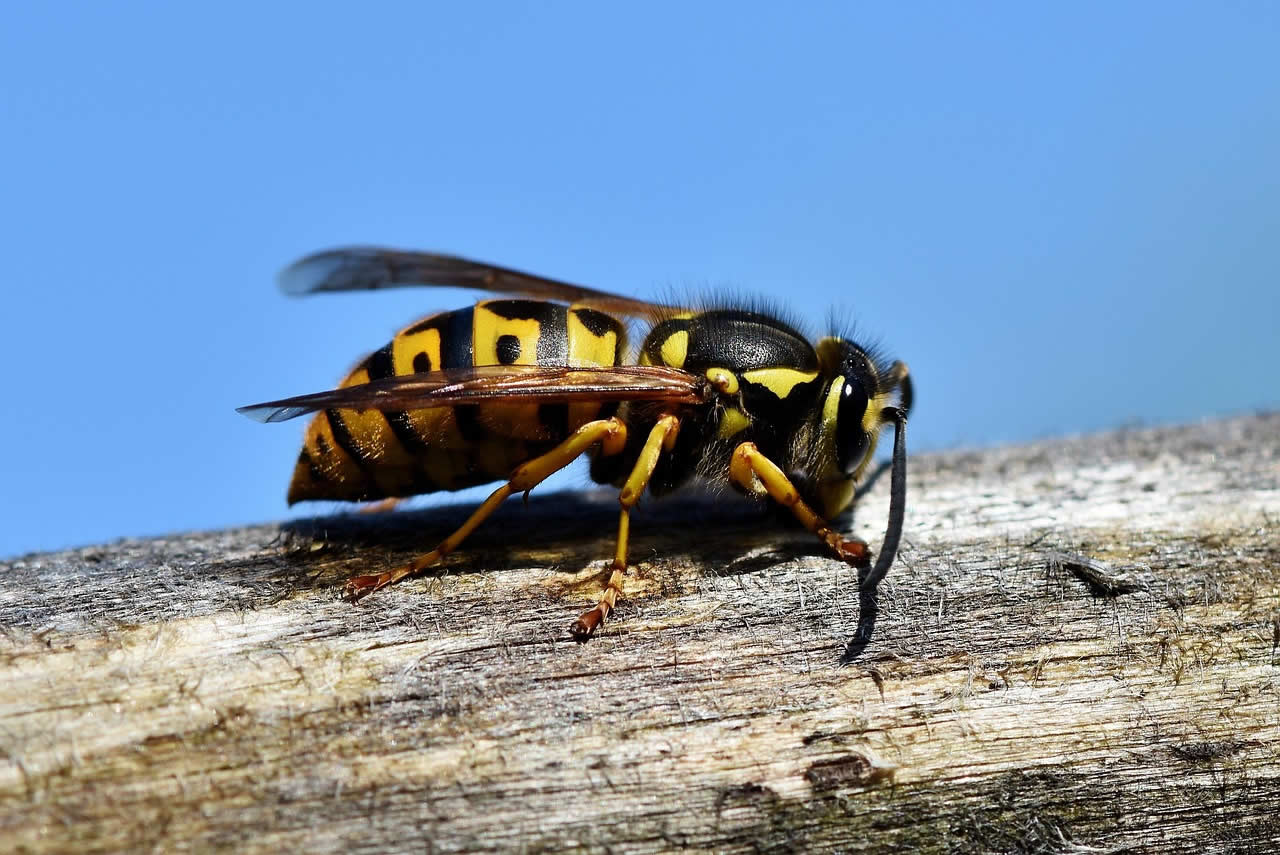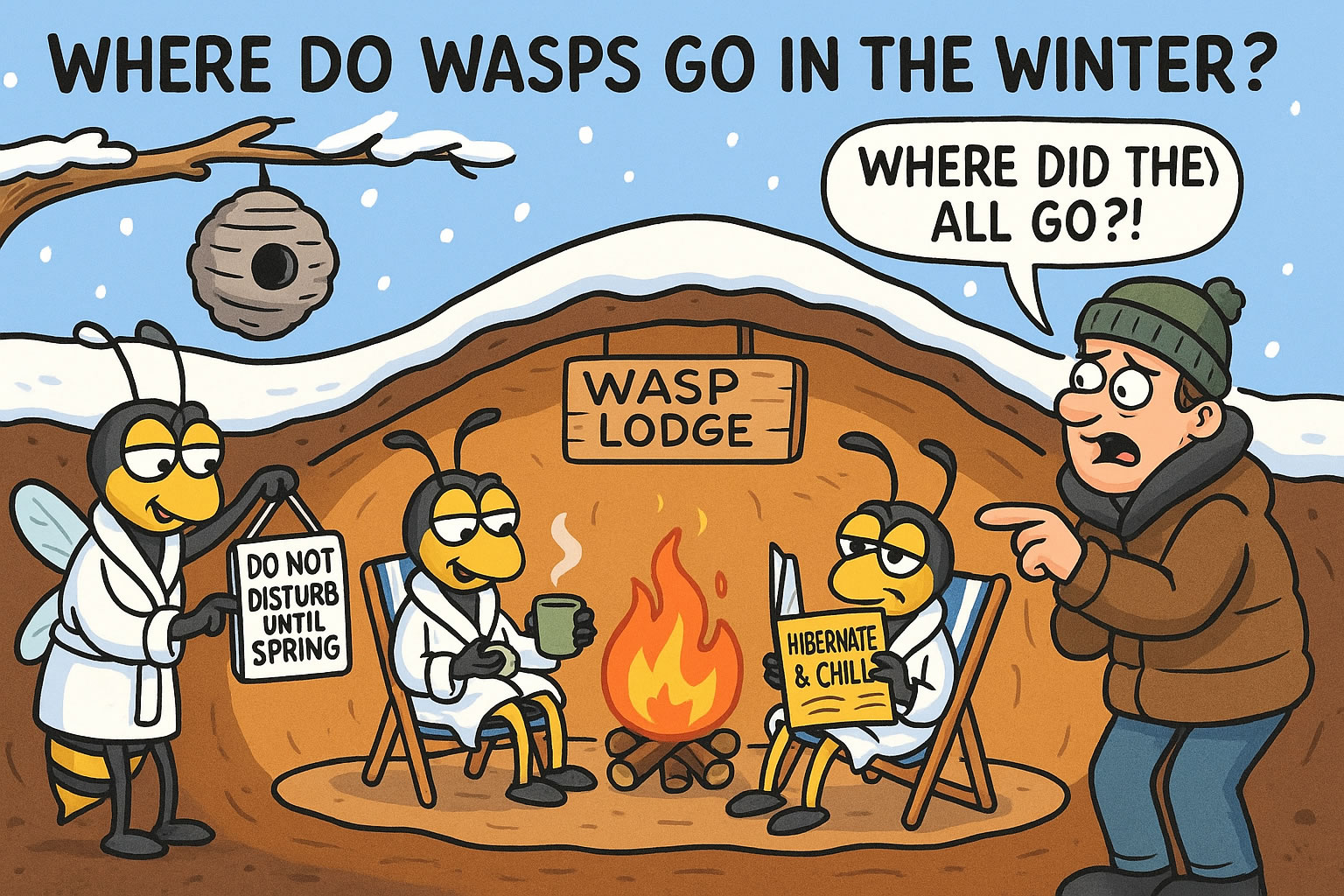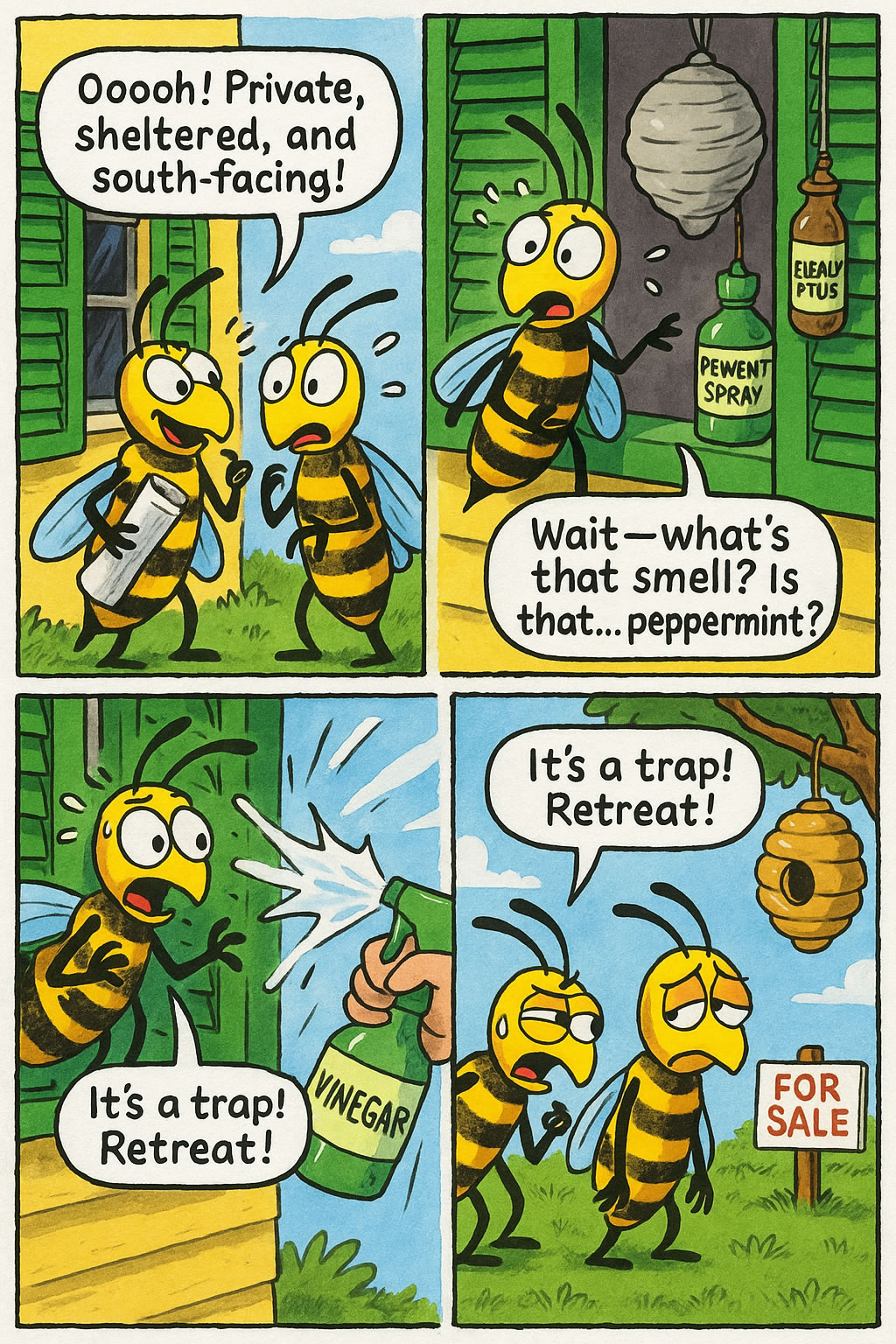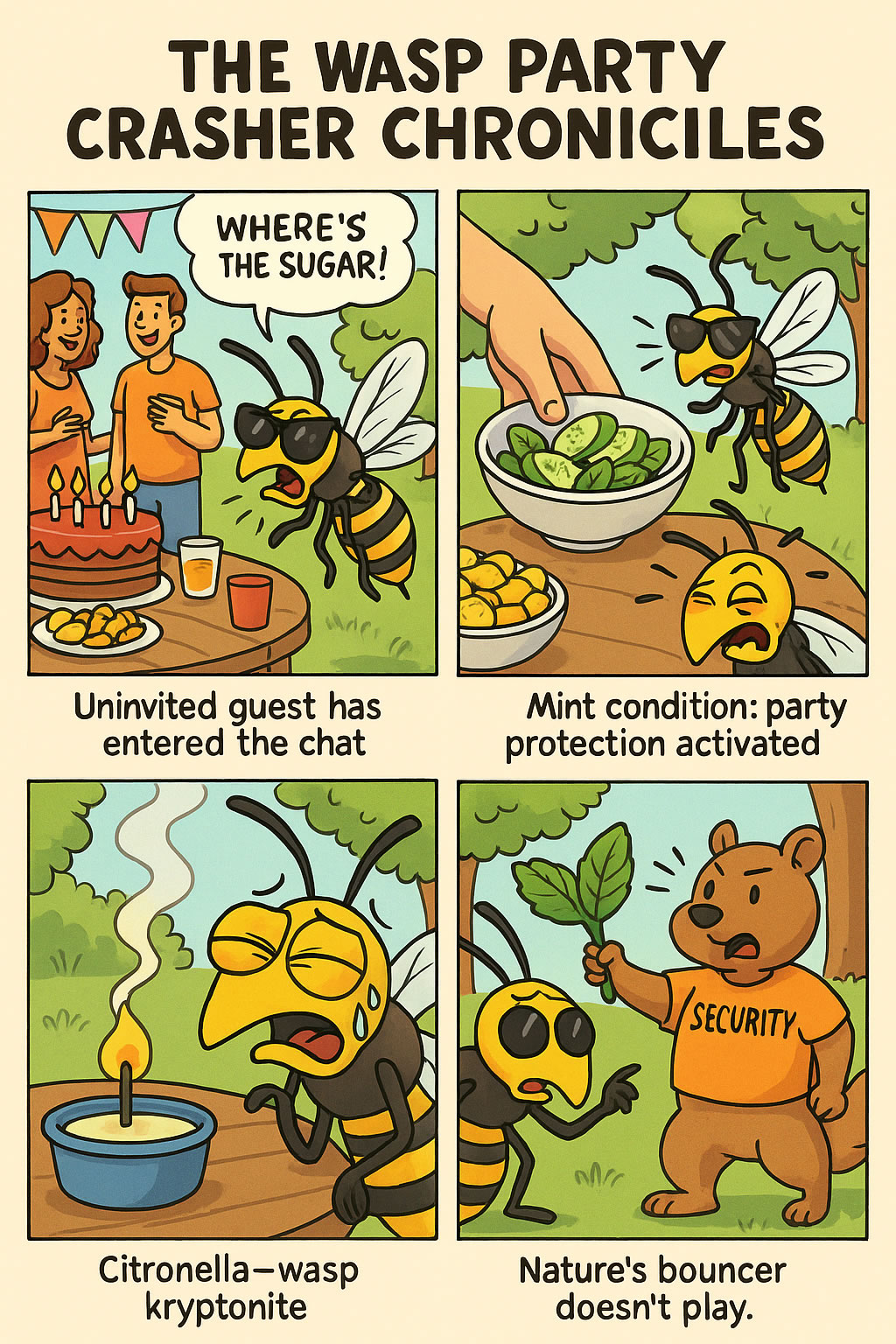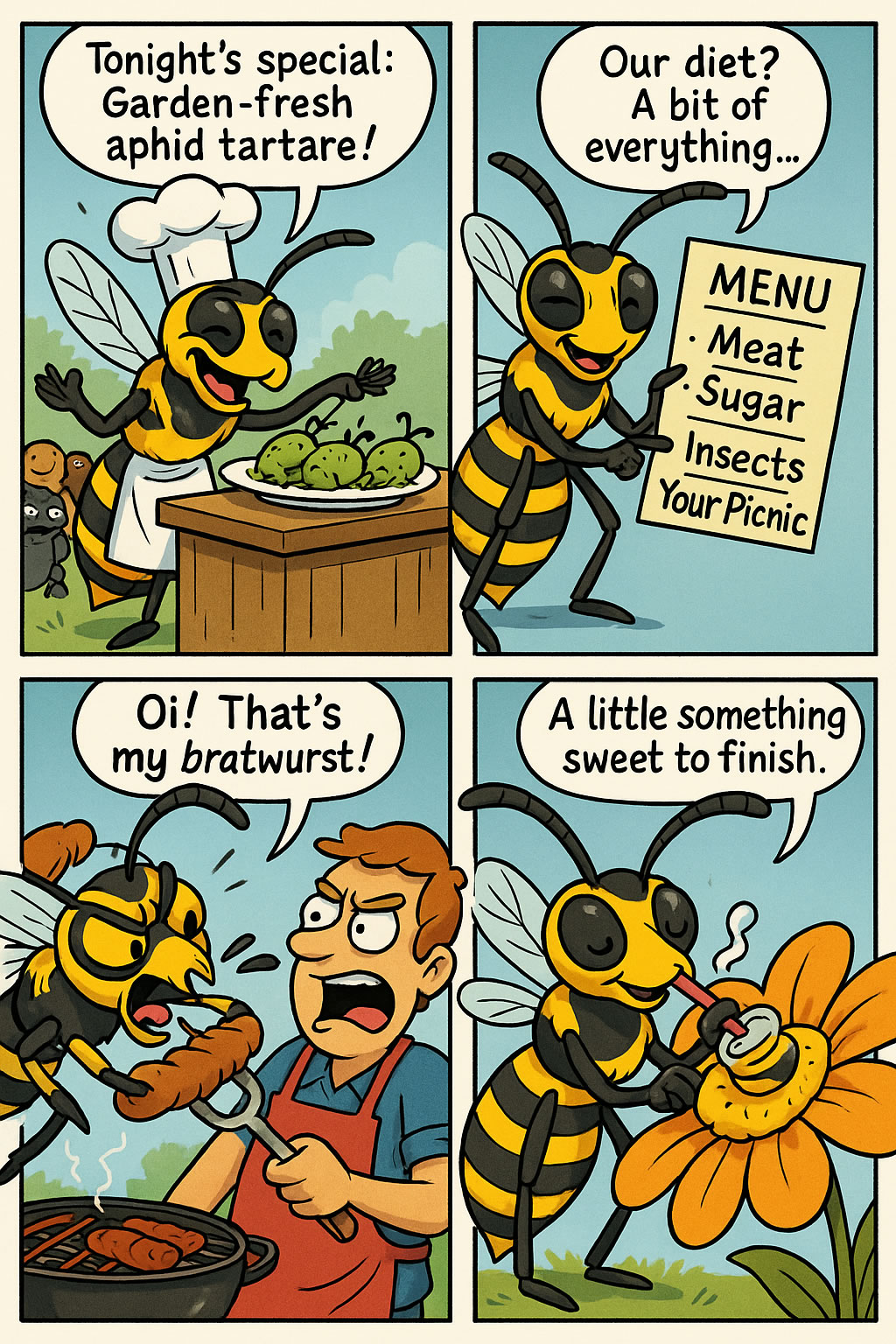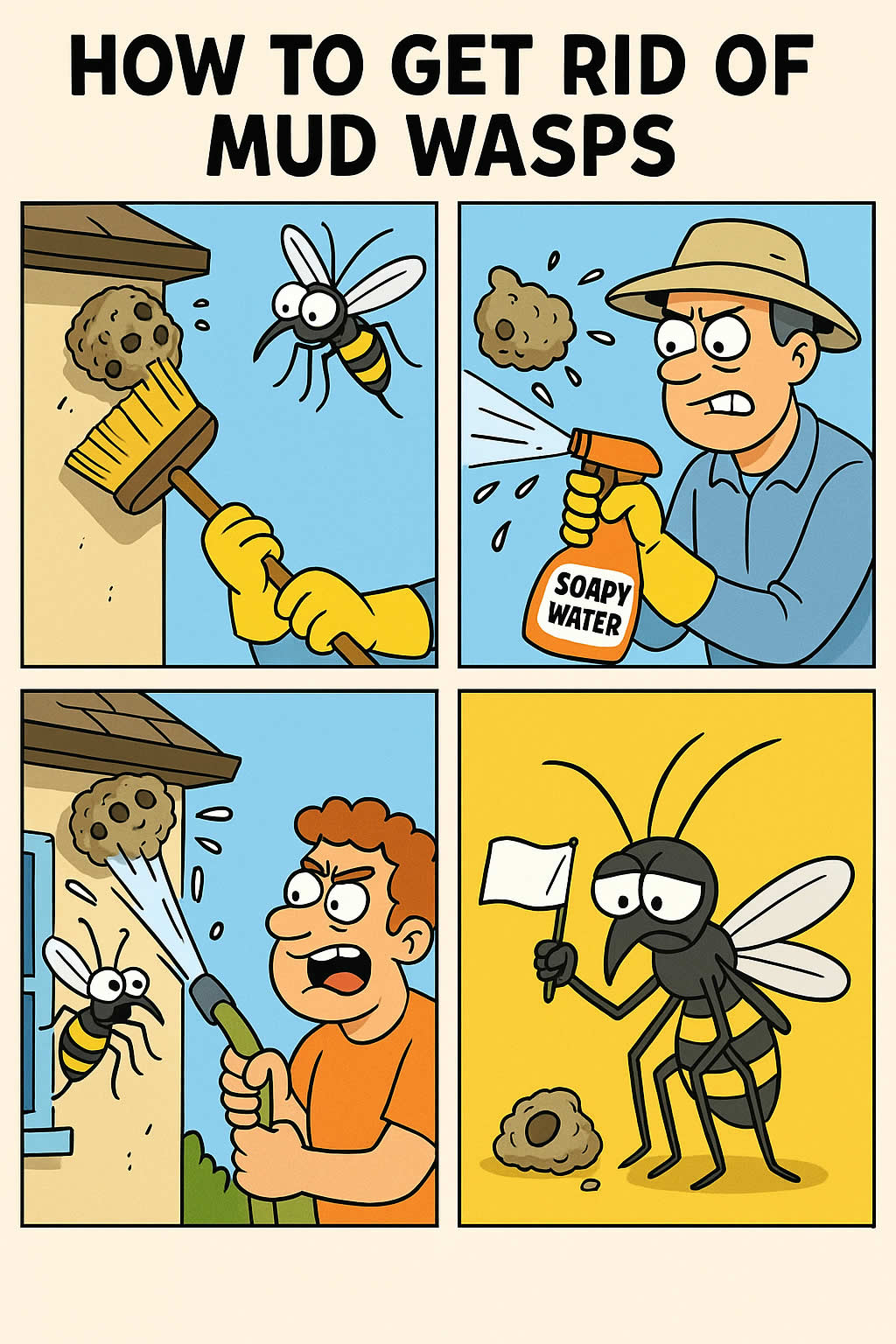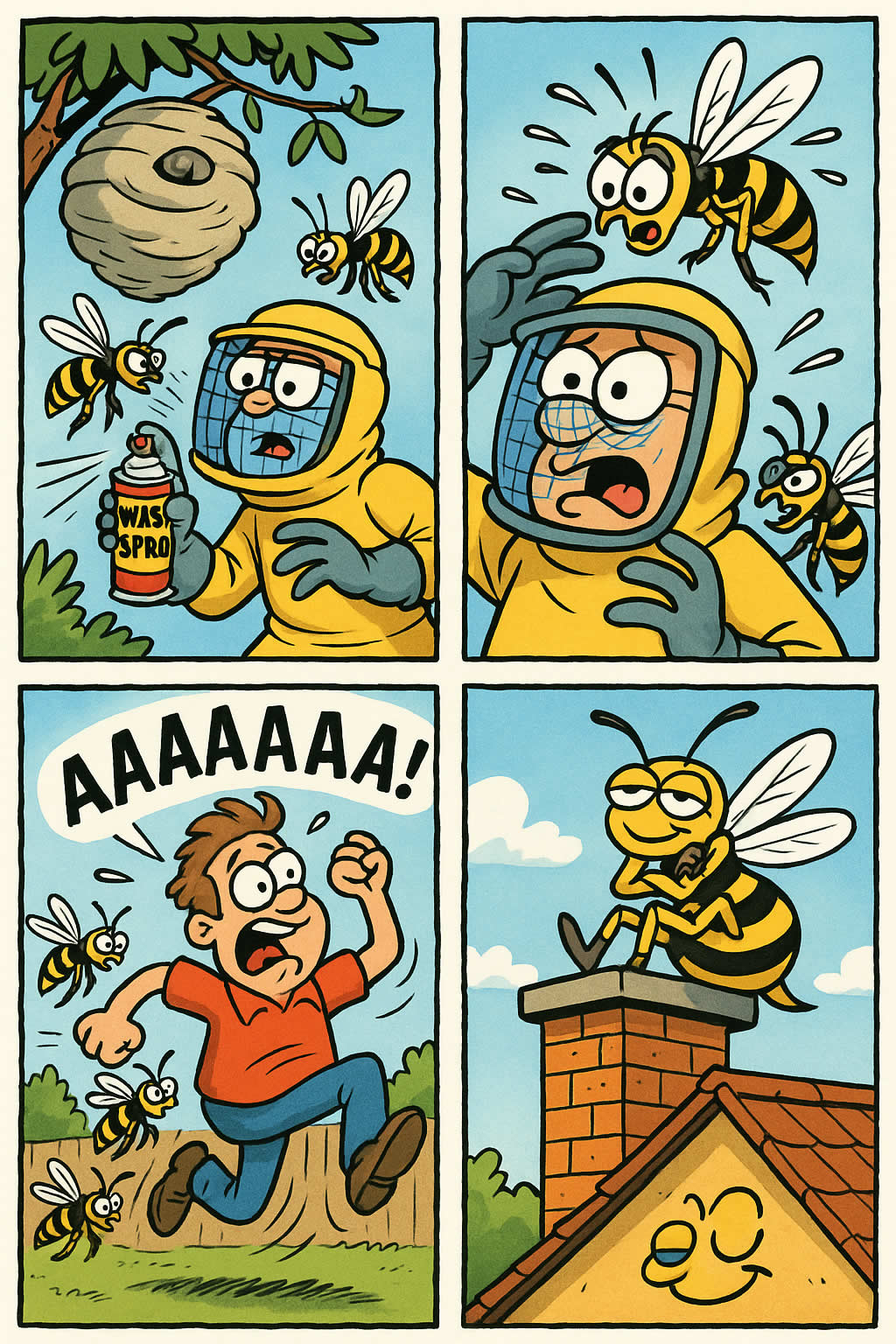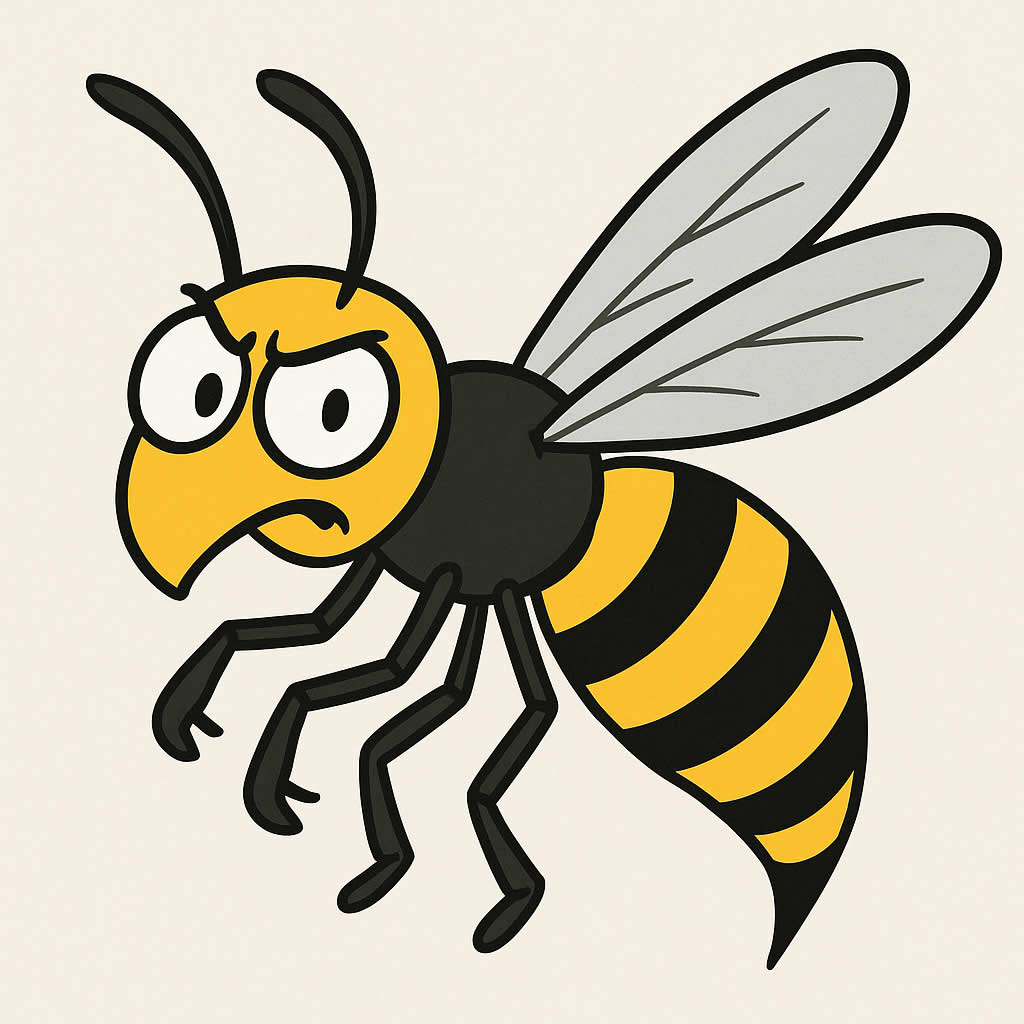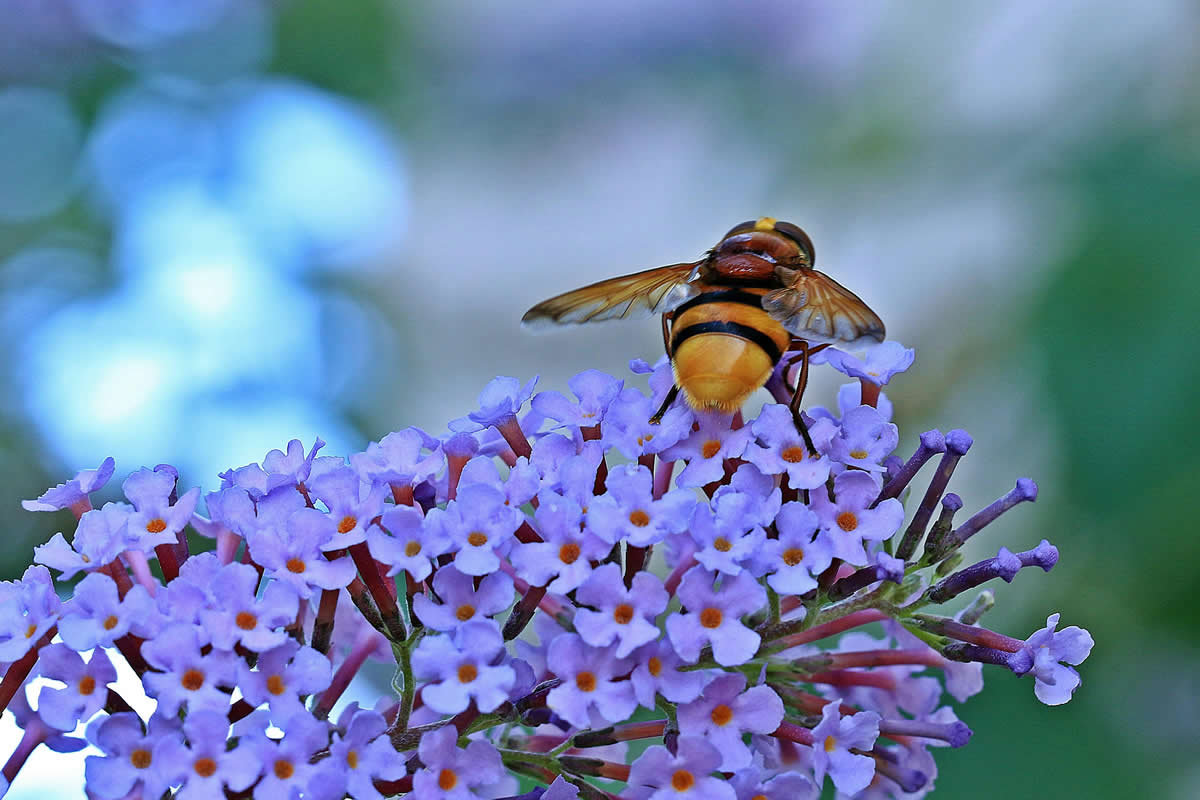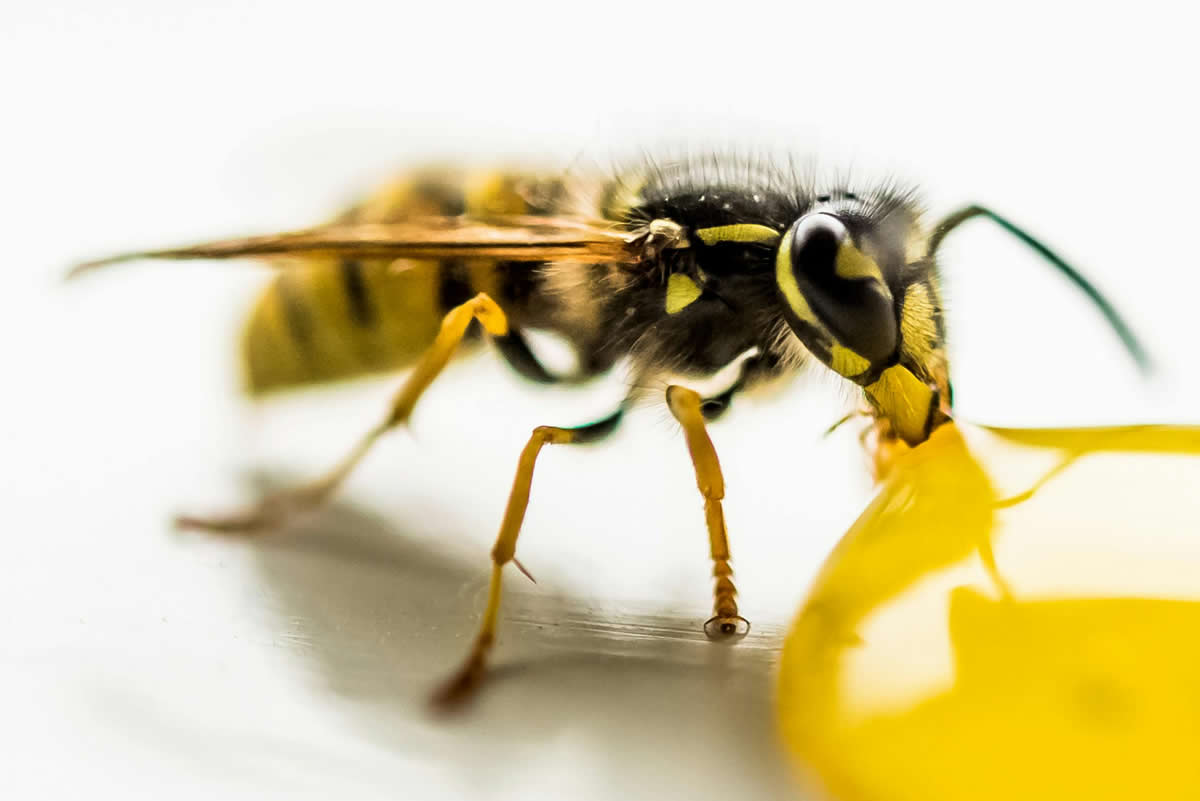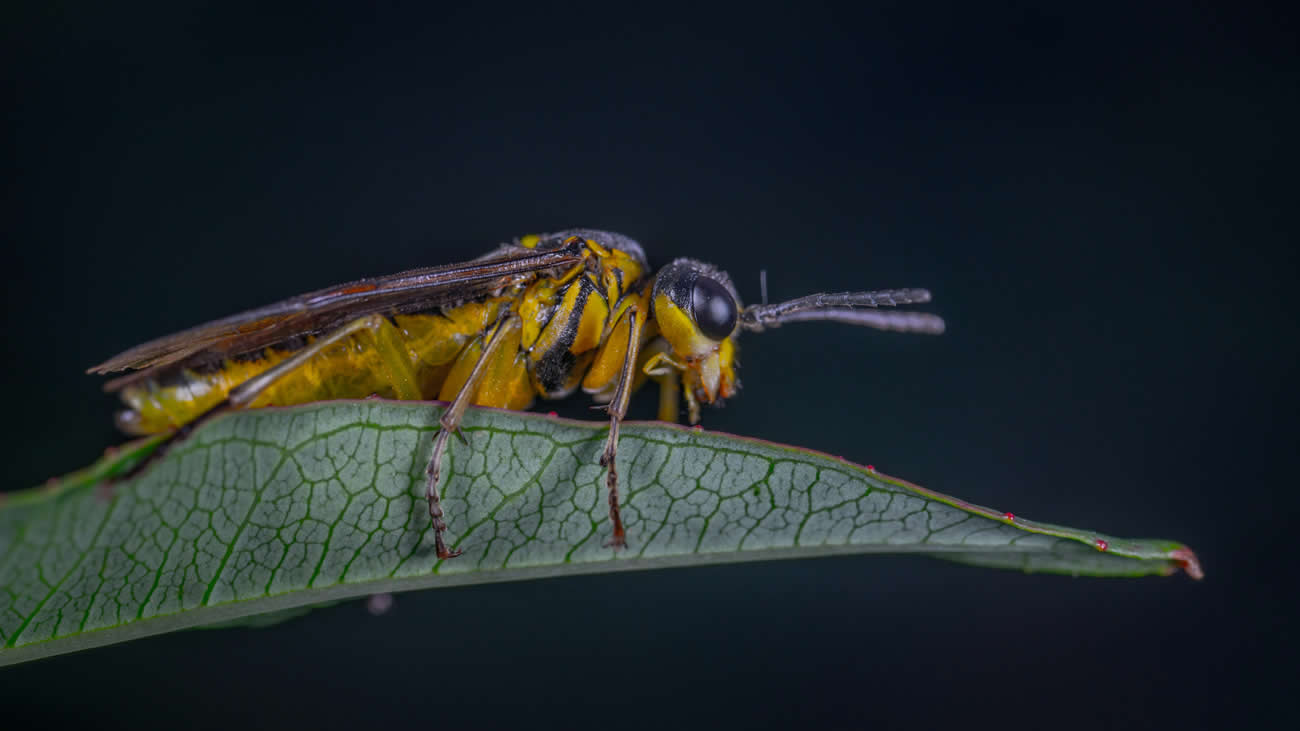Related Queries
ToggleQueen wasps are truly remarkable creatures, measuring up to 3.8 centimetres in length, while worker wasps typically reach only 1.7 centimetres. In fact, these fascinating insects can lay up to 1,000 eggs daily during their one-year lifespan, making them crucial for colony survival.
We often find it challenging to distinguish queen wasps from their workers. However, their distinctive features, including a pointed lower abdomen, darker colouration, and larger compound eyes, set them apart. As the only wasps that hibernate during winter, these colony leaders emerge in early spring to establish new nests.
We’ll help you identify queen wasps by exploring their unique physical characteristics, size variations, and behavioural patterns. We’ll also examine how to differentiate them from similar species and understand their defensive capabilities.
Queen Wasp Size Guide
Spotting a queen wasp starts with understanding their distinctive size characteristics. These remarkable insects stand out from their worker counterparts through several physical attributes that make them the largest members of their colonies.
Length and wingspan
The size difference between queen wasps and worker wasps serves as a primary identifier. Queen wasps typically measure between 2 to 2.5 centimetres in length, notably larger than worker wasps who reach only 1.2 to 1.7 centimetres. Furthermore, certain species can grow even larger, reaching an impressive length of 2.5 to 3.8 centimetres.
One striking feature that sets queen wasps apart is their wing structure. Unlike other colony members who possess a single set of wings, queen wasps boast two sets of wings. These larger wings enable them to maintain control of their bigger body mass throughout flight, particularly when searching for suitable nesting sites.
Weight and body mass
The queen’s body mass plays a crucial role in her survival and success. A larger body size correlates directly with better survival rates and reproductive success. Additionally, queens with greater fat stores demonstrate superior competitive abilities when seeking mates. Their substantial body mass supports their primary function of laying eggs and establishing new colonies.
The queen’s abdomen appears distinctively longer and more slender than other wasps, divided into seven clear segments. This elongated structure accommodates their enhanced reproductive capabilities, necessary for laying the thousands of eggs required to establish and maintain a thriving colony.
Regional size variations
Size variations among queen wasps often depend on geographical location and specific species. For instance, yellow jacket queens display more noticeable size differences compared to workers, with approximately 0.64 centimetres of additional length. These variations help them adapt to different environmental conditions across regions.
Interestingly, colony structure affects queen wasp populations. In their native habitats, most colonies maintain a single queen (monogyne) structure. Nevertheless, some invasive populations have evolved to support multiple queens (polygyne) within a single colony. These polygyne colonies can persist for up to three years, growing substantially larger than their native counterparts.
The queen’s size advantages serve practical purposes beyond mere identification. Their larger body mass stores essential nutrients needed for winter hibernation. Moreover, their enhanced size supports their role in establishing new colonies each spring, as they must single-handedly construct the initial nest structure and rear the first generation of workers.
Understanding these size characteristics proves particularly valuable when identifying queen wasps in early spring. At this time, queens emerge from hibernation, and their larger size becomes most apparent as they search for suitable nesting locations. Their distinctive measurements, coupled with other physical features, make them unmistakable among other flying insects in the garden or woodland areas.
Key Visual Markers
Beyond their impressive size, queen wasps possess distinct visual features that make them stand out from other colony members. Let’s examine these unique characteristics that help identify these remarkable insects.
Head features
The head structure of queen wasps exhibits several distinctive traits. Most notably, they possess a triangle-shaped head equipped with two large compound eyes and three ocelli (simple eyes). These enhanced visual features aid in navigation and sensing their environment effectively.
Another striking feature appears on their face – a bright yellow colouration marked with a single dot. Their antennae serve as crucial sensory tools, helping them detect environmental changes and potential threats. These sensory capabilities prove essential, especially during their solitary phase of establishing new colonies.
Abdomen shape
The abdomen of queen wasps displays unique characteristics that set them apart from regular wasps. Their lower abdomen appears distinctively pointed, with a body structure divided into seven clear segments. The bright yellow and black stripes create a striking pattern across their abdomen, making them easily recognisable.
One of the most noticeable features is their distinctive ‘waist’ – a narrowed section between the thorax and abdomen. This narrow waist appears more pronounced in queen wasps compared to other colony members. The thorax itself often shows specific markings, with some species displaying four yellow spots that might have a reddish tinge in females.
Leg characteristics
The leg structure of queen wasps varies depending on their species. For instance, European hornets display black or reddish-brown legs. Conversely, Asian hornets showcase distinctive yellow tips on their legs, contrasting with their predominantly dark body.
These leg features serve multiple purposes:
- Supporting their larger body mass
- Enabling precise movement during nest construction
- Assisting in gathering materials for nest building
- Maintaining balance during flight
The combination of these visual markers – from their triangle-shaped head to their pointed abdomen and distinctive leg colouration – creates a unique profile that helps distinguish queen wasps from other similar insects. Their bright yellow and black striped pattern, alongside their narrow waist, serves as nature’s way of signalling their royal status within the colony.
Certainly, these physical characteristics play crucial roles beyond mere identification. The pointed lower abdomen houses their modified ovipositor, which has evolved into a sharp stinger. Meanwhile, their enhanced visual system, supported by compound eyes and ocelli, enables them to navigate effectively while searching for suitable nesting sites and detecting potential threats to their colonies.
Look-alike Species
Distinguishing queen wasps from similar-looking insects requires careful observation of specific features. Several species share resemblances with queen wasps, yet possess unique characteristics that set them apart.
Hornets vs queen wasps
The British Isles hosts two primary hornet species that often get mistaken for queen wasps. European hornets display a distinctive black and yellow abdomen, alongside black or reddish-brown thorax and legs. Their size serves as another differentiating factor, with queen hornets measuring approximately 3.5 centimetres, significantly larger than queen wasps who reach about 2 centimetres.
The Asian hornet presents a markedly different appearance, sporting a predominantly dark body adorned with yellow stripes across the abdomen and yellow-tipped legs. Both hornet species exhibit some hair on their bodies, whereas queen wasps remain virtually hairless.
Despite their intimidating size, hornets generally show less aggressive behaviour than queen wasps. They typically sting only when provoked, although they possess the unique ability to both bite and sting simultaneously. Their nesting preferences also differ, with hornets favouring tree trunks and hollow walls.
Queen bees vs queen wasps
Queen wasps and queen bees share some similarities in their colony leadership roles, yet differ significantly in their physical attributes and behaviours. The most striking contrast lies in their primary functions – while queen bees focus solely on egg-laying duties, queen wasps take on multiple responsibilities, particularly during colony establishment.
Both species possess stingers, though they employ them differently. Queen wasps use their stingers primarily for defence and hunting, whereas queen bees reserve theirs mainly for combat with rival queens. This behavioural distinction reflects their divergent survival strategies.
The visual differences between these royal insects prove equally noteworthy:
- Queen wasps showcase bright yellow and black markings with minimal body hair
- Their faces display three distinctive black dots, with the lower two typically appearing smaller
- Anchor or dagger-like markings adorn their facial features
Interestingly, some insects have evolved to mimic queen wasps’ appearance. The hornet mimic hoverfly, for instance, bears a striking resemblance to wasps despite being completely harmless. Such mimicry serves as a clever defensive strategy, deterring potential predators through false association with more dangerous species.
Understanding these distinctions proves particularly valuable in spring, as both queen wasps and similar species emerge from hibernation. Their territorial nature means correct identification becomes crucial for avoiding unnecessary confrontations. Although queen wasps might appear intimidating, they generally prefer avoiding human contact unless their nest faces direct threats.
When to Look for Queen Wasps
Spring marks a crucial period in the annual cycle of queen wasps. As winter’s grip loosens, these solitary insects emerge from their hibernation spots, ready to establish new colonies and continue their species’ survival.
Early spring signs
The first glimpses of queen wasps typically occur as temperatures begin to rise, often as early as March in various parts of the UK. These newly awakened queens embark on their annual mission, flying up to 70 kilometres in search of ideal nesting locations.
Upon emerging from hibernation, queen wasps display distinct behaviours that make them easier to spot. Initially, they focus on feeding and exploring their surroundings. Subsequently, these resourceful insects begin searching for suitable nesting sites, primarily targeting:
- Dark and dry spaces
- Warm spots with sunny aspects
- Attics and house roofs
- Building eaves and walls
The timing of queen wasp emergence follows a predictable pattern throughout the British seasons. The wasp season officially begins in April and continues through September. Once active, queens start constructing their nests using wood pulp gathered from various sources, such as fence posts, garden furniture, and even cardboard.
Interestingly, queen wasps never reuse previous nest locations. Instead, they meticulously select new, well-sheltered spots that offer protection and accessibility for their future colony. After choosing an appropriate site, the queen begins laying eggs that will develop into worker wasps.
Weather conditions play a vital role in queen wasp activity. Unusually warm winters pose specific challenges, as queens might emerge prematurely from hibernation. Such early awakening often leads to difficulties in finding sufficient food sources, potentially threatening their survival.
The cyclical nature of queen wasp appearances creates two primary observation periods throughout the year. First, in early spring when they emerge from hibernation, and again at summer’s end when new queens prepare for the following year. During these periods, identifying queen wasps becomes straightforward since they travel alone, appearing noticeably larger than other wasps.
As April progresses, surviving queens establish their colonies. This period proves particularly critical as they single-handedly construct the initial nest foundation before laying the first batch of eggs. These eggs eventually develop into worker wasps, marking the beginning of a new colony cycle.
Queen Wasp Defence Features
The defensive capabilities of queen wasps showcase nature’s intricate balance between survival and protection. These remarkable insects possess sophisticated defence mechanisms that help safeguard both themselves and their colonies.
Stinger characteristics
Queen wasps wield a formidable stinger, which evolved from a modified ovipositor (egg-laying tube). Their stinger features two distinct barbs, each serving a specific purpose. The first barb immobilises prey, whilst the second injects venom with remarkable precision.
One crucial aspect of queen wasp stings lies in their ability to strike multiple times, as their stinger remains intact after each use. The venom contains a potent mixture of compounds, primarily histamine and acetylcholine, causing pain and swelling in humans.
Interestingly, queen wasp stings prove no more dangerous than those of worker wasps, producing identical symptoms of swelling, redness, and discomfort. Nevertheless, their defensive capabilities extend far beyond mere stinging ability.
Warning signs
Queen wasps display several clear warning signals before resorting to their stinger. These indicators help potential threats recognise imminent danger:
- Body language shifts, including hovering near perceived threats
- Emission of warning pheromones that alert other colony members
- Distinctive tapping or buzzing sounds during nest construction
The most noticeable warning behaviour begins with wing and antennal raising, followed by wing flipping and fluttering. Under increased provocation, queens demonstrate more aggressive signals:
- Raising and waving their forelegs rapidly
- Unfolding their wings for buzzing displays
- Pointing their stinger toward potential threats
Protective behaviour
Queen wasps exhibit sophisticated protective strategies that extend beyond individual defence. Upon detecting threats, they release specific pheromones that signal other workers to join defensive efforts. This coordinated response ensures colony survival, particularly in high-traffic areas.
Their protective instincts manifest most strongly during nest establishment. Queens apply a chemical barrier on the central column of their nests, specifically designed to repel ants. This thoughtful defence mechanism safeguards their developing colonies from potential invaders.
Fascinatingly, queen wasps demonstrate different levels of defensiveness based on various factors:
- Colony age and development stage
- Type of intrusion or threat
- Age and type of nest occupants
- Overall colony stability
The defensive zone around their nest, known as the ‘nest yard’, represents an area within visual range where queens actively monitor for threats. Within this zone, they employ a graduated response system, escalating their defensive actions based on the proximity and nature of potential threats.
Notably, queens display more restrained defensive behaviour compared to worker wasps, particularly toward vertebrates. This measured response suggests an evolutionary adaptation that balances the need for protection against energy conservation, essential for their primary role of colony establishment and egg-laying.
Understanding these defence mechanisms proves vital for human interaction with queen wasps. Their protective behaviours, though potentially intimidating, primarily serve to safeguard their colonies rather than to actively seek confrontation. Recognising their warning signs allows for safer coexistence, reducing the likelihood of defensive responses.
Should I kill a queen wasp?
Killing a queen wasp can be effective, but only under specific circumstances. The best time to do so is in early spring when she is still searching for a spot to build her nest. At this stage, eliminating the queen can prevent an entire colony from forming.
However, if the queen is killed later in the season after a nest has been established, the impact is minimal. Worker wasps from the colony can simply select another potential queen to continue the colony’s lifecycle. Therefore, timing is critical if your intention is to reduce the wasp population effectively.
It is important to note that killing a queen wasp does not guarantee the complete elimination of a wasp colony. There are various factors that can affect the success of this method, such as the proximity of other potential queen wasps and environmental conditions.
Aside from physically removing or killing the queen, there are also several natural methods that can be used to control wasp populations. These include using essential oils, plants with strong scents, and creating barriers with materials like mint leaves or citrus fruits.
Conclusion
Queen wasps stand as remarkable creatures in the insect world, displaying unique characteristics that make them truly fascinating. Their larger size, distinctive markings, and sophisticated defence mechanisms set them apart from other colony members and similar species.
Understanding these royal insects proves essential, especially during early spring when they emerge from hibernation. While their presence might seem intimidating, queen wasps actually prefer avoiding confrontation unless their nests face direct threats. Their measured defensive responses and warning signals demonstrate an impressive balance between colony protection and energy conservation.
Though often confused with hornets or queen bees, queen wasps possess distinct features that make identification straightforward. Their pointed lower abdomen, bright yellow markings, and larger compound eyes create a unique profile that helps distinguish them from other flying insects.
These remarkable insects play a crucial role in maintaining ecological balance through their annual cycle of emergence, colony establishment, and preparation for winter hibernation. Their sophisticated defensive capabilities and protective behaviours showcase nature’s intricate design for species survival.
Pest Control Chaul End – Pest Control Aley Green – Pest Control Sutton
